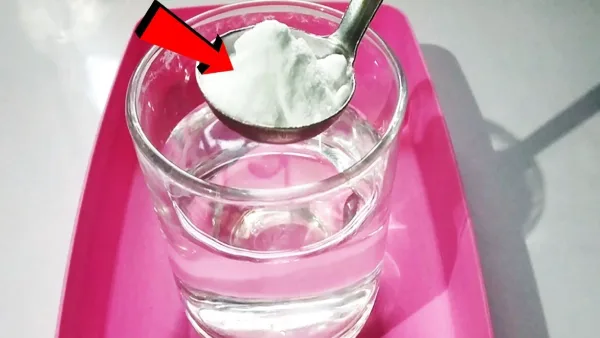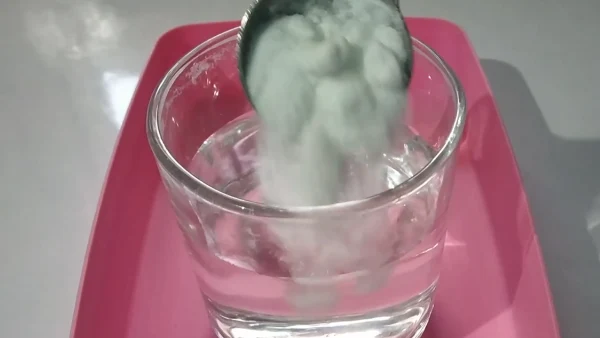Last Updated on October 18, 2023
Oxiclean and vinegar are two common toilet cleaning agents that you often find in your cleaning arsenal. They each have their unique strengths and uses, from tackling stubborn stains to cleaning your toilet.
What if you mix OxiClean with vinegar for an even more potent cleaning solution? It is not recommended to mix OxiClean and vinegar. Mixing these two cleaning agents can lead to unexpected and potentially hazardous consequences.
One of the primary reasons to avoid this combination is the loss of cleaning power. Oxiclean releases oxygen ions to break down and remove stains, but vinegar’s acidity neutralizes these oxygen ions, making both substances less effective.
There are also other reasons not to mix OxiClean and vinegar. We will explore why combining Oxiclean and vinegar is best avoided for your cleaning endeavors.
Can I Mix OxiClean With Vinegar: 3 Reasons Not to Mix

If you are considering combining Oxiclean and vinegar, there are 3 reasons why you should avoid doing so.
- Loss of cleaning power
- Health risks
- Corrosive potential
Each of the reasons for not mixing OxiClean with vinegar is discussed in detail in the following discussion.
1. Loss of Cleaning Power
If you mix OxiClean with vinegar, you’ll find that it significantly reduces the cleaning power of both substances. This is because the acidity of vinegar neutralizes the oxygen ions released by Oxiclean upon contact with water.
These oxygen ions are crucial for breaking down and removing stains from the toilet efficiently and effectively. When vinegar neutralizes them, OxiClean loses its stain-fighting properties, resulting in a mixture that lacks the cleaning power of both Oxiclean and vinegar.
Due to other components in each substance, the combination may still have some cleaning abilities, but it will only be as effective as using it separately.
Therefore, avoiding mixing Oxiclean and vinegar together is best if you’re looking for maximum cleaning results.
2. Health Risks
When Oxiclean and vinegar are mixed, a chemical reaction can be harmful. Oxiclean contains sodium percarbonate, which releases hydrogen peroxide when it comes into contact with water.
Vinegar, on the other hand, is primarily composed of acetic acid. When these two substances combine, they create a reaction that releases gasses. Specifically, the mixture can produce chlorine gas, which is toxic.
Inhaling the fumes generated from this mixture can pose serious health risks. The produced chlorine gas exposure can lead to a range of symptoms.
This can include irritation of the eyes, nose, and throat, coughing, difficulty breathing, and, in severe cases, even lung damage.
3. Corrosive Potential
The resulting mixture can be corrosive to certain surfaces and materials, potentially causing damage or deterioration.
When you mix OxiClean with vinegar, the process produces carbon dioxide and water. This reaction can release heat and create a foaming effect due to the gas’s bubbling action.
When these two substances are combined, they can form a highly reactive solution that may corrode or erode certain surfaces and materials over time.
It is advisable to exercise caution when using this mixture and avoid contact with delicate or sensitive items, like marble countertops and fabrics.
What should you do if you accidentally mix OxiClean and vinegar?

If you have mixed OxiClean with vinegar to clean your toilet, immediately ensuring your safety and mitigating any potential hazards is crucial.
Stop what you’re doing and move to a well-ventilated area to avoid inhaling any fumes that may have been created.
If the mixture comes into contact with your skin, thoroughly rinse the affected area with water.
Immediately seek medical attention if you get it in your eyes. Flush your eyes for at least 15 minutes with plenty of water.
Can OxiClean be mixed with detergent to clean toilets?
Oxiclean can be mixed with detergent to enhance the cleaning power when tackling toilet stains and grime.
Combining Oxiclean with detergent can effectively boost its cleaning capabilities, particularly when dealing with stubborn stains or mineral deposits.
To use it effectively, simply follow the instructions on the OxiClean packaging for mixing ratios and application techniques.
However, you have to ensure that the cleaning agents you combine are safe for your toilet’s material, as some abrasive cleaners might harm certain surfaces.
Always check for compatibility and consider spot testing in an inconspicuous area before applying the mixture to the entire toilet bowl.
What other cleaning agent should you never mix vinegar with?
You should never mix vinegar with other cleaning products like bleach, ammonia, and those ‘blue’ window cleaning products.
The reason is that combining vinegar with bleach or ammonia can create dangerous chlorine gas, which poses serious health risks when inhaled.
Similarly, mixing vinegar with ‘blue’ window cleaning products, which often contain ammonia-based compounds, can also release chlorine gas.
Can you use baking soda and OxiClean together?
You can safely use OxiClean and baking soda together for toilet cleaning. OxiClean is essentially an adduct of baking soda and hydrogen peroxide, and when it dissolves in water, it essentially becomes baking soda and peroxide.
Mixing them can be an effective combination for various cleaning tasks, as both ingredients have their unique cleaning properties. Baking soda is known for its gentle abrasive quality and odor-neutralizing abilities, while OxiClean is a powerful stain remover.
Together, they can tackle stains, brighten whites, and provide an extra boost in cleaning power. However, always ensure that you follow recommended usage instructions for both products to achieve the best results safely.
Embrace Safe Cleaning Practices for a Healthy Home
When you consider your household cleaning routines, remember that while Oxiclean and vinegar have unique strengths, they are not meant to be mixed together.
The potential hazards, including the loss of cleaning power, chemical reactions, corrosive potential, and health risks, make it clear that this combination should be avoided.
It’s always best to use these cleaning agents separately for toilet cleaning, following their respective instructions for safe and effective cleaning.
Proper usage and safety precautions should be your top priorities when cleaning tough stains on clothes or surfaces around your house. Keep your cleaning arsenal well-informed and your cleaning practices safe.

